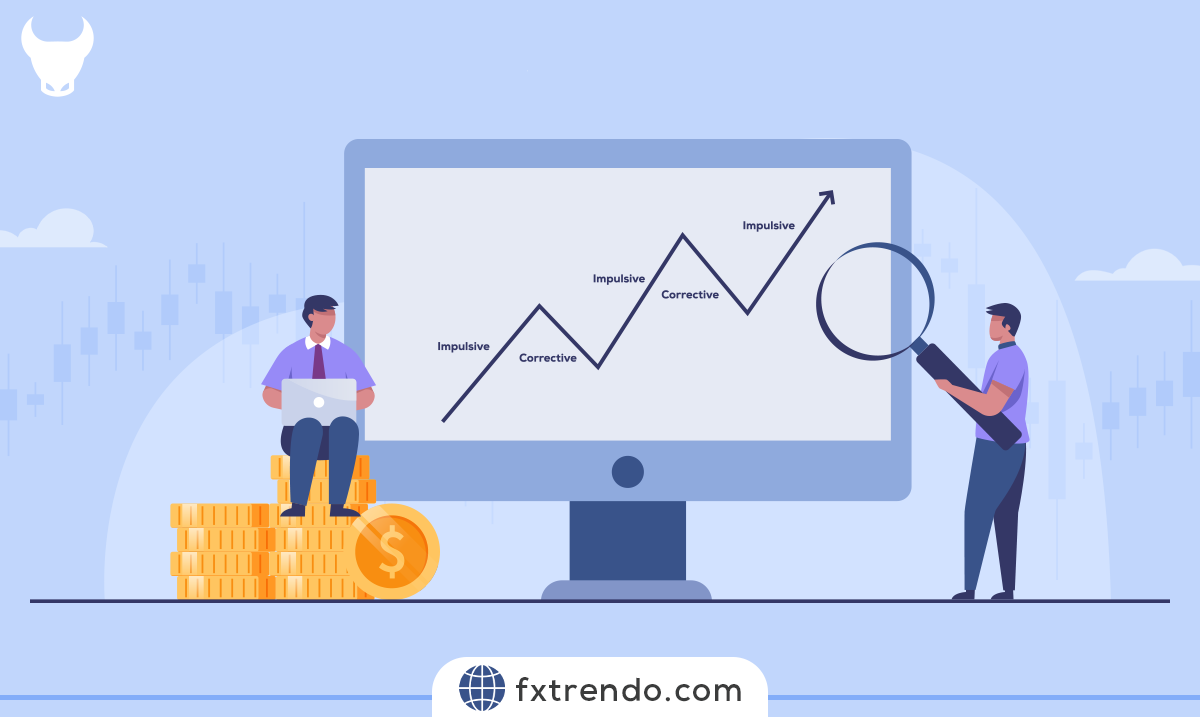Ultimate Guide to Liquidity in forex


Liquidity in financial markets is known as the fundamental factor of price movement, which has a wide influence on the dynamics and balance of markets.
This guide will walk you through everything you need to know about liquidity, from its fundamental role in the forex market to how it impacts your trading strategies.
Whether you’re a seasoned trader or just starting out, understanding liquidity can give you a significant edge. We’ll explore how high liquidity can lead to tighter spreads and better execution, making your trades more efficient.
So, get ready to dive deep into the world of forex liquidity and discover how it can enhance your trading experience. Let’s get started on this exciting journey!
Contents
What is Liquidity in Forex?
Liquidity in forex refers to how easily you can buy or sell a currency pair without causing a significant change in its exchange rate.
Imagine you’re at a bustling market with lots of buyers and sellers; you can quickly trade items without affecting their prices. That’s high liquidity. In contrast, if you’re at a small, quiet market with few participants, trading becomes slower and prices can fluctuate more. That’s low liquidity.
Liquidity in the forex market is measured by the trading volume and the bid-ask spread. Trading volume refers to the total amount of a currency that is traded within a specific period. Higher trading volumes generally indicate greater liquidity.
The bid-ask spread is the difference between the price at which you can buy a currency (ask) and the price at which you can sell it (bid). A narrower spread usually signifies higher liquidity, as it means there is less difference between buying and selling prices.
In the forex market, liquidity is crucial because it ensures that trades can be executed quickly and at stable prices. This is important for minimizing risks and maximizing profits.
High liquidity means there are many traders actively buying and selling currencies, which makes it easier to find a counterparty for your trade. This results in tighter bid-ask spreads, meaning the difference between the buying and selling price is smaller, which is beneficial for traders.
Why is Liquidity Important in Forex Trading?
Liquidity is crucial in forex trading because it impacts how easily and quickly you can buy or sell currency pairs. High liquidity means many active traders in the market, ensuring trades can be executed swiftly and at stable prices. This is important for several reasons:
1. Smooth Execution of Trades: In a highly liquid market, you can enter and exit trades without significant delays. This helps you take advantage of market opportunities and avoid potential losses due to price fluctuations.
2. Tighter Spreads: High liquidity leads to tighter bid-ask spreads, meaning the difference between the buying and selling price is smaller. This reduces trading costs and allows traders to keep more of their profits.
3. Price Stability: With more participants in the market, prices tend to be more stable. This reduces the risk of sudden price swings, making it easier to predict market movements and plan your trading strategy.
4. Reduced Slippage: Slippage occurs when a trade is executed at a different price than expected. In a liquid market, the chances of slippage are lower because there are enough buyers and sellers to match your trade at the desired price.
5. Better Profit Opportunities: High liquidity provides more opportunities to profit from small price movements. Traders can take advantage of these movements without worrying about large price impacts.
In summary, liquidity is essential in forex trading as it ensures smooth trade execution, reduces costs, stabilizes prices, minimizes slippage, and offers better profit opportunities.
What Is the Effect of Liquidity on Financial Markets?
Liquidity is a key factor in financial markets and has wide-ranging effects on market behavior and performance. Here are some of the impacts of liquidity on trading and market orders:
1. Increased Trading Volume: Higher liquidity leads to increased trading volume in financial markets. Large investors can easily execute bigger trades without causing significant price changes.
2. Reduced Price Deviation: More liquidity results in reduced price deviation. With lower spreads, the market becomes more stable.
3. Faster Trade Execution: Higher liquidity speeds up the execution of trades. This is crucial for professional investors who need to act quickly on market opportunities.
4. Market Balance: Liquidity helps maintain market balance. High liquidity ensures a dynamic and balanced market.
In summary, liquidity enhances trading volume, stabilizes prices, speeds up trade execution, and maintains market balance, making it a vital component of financial markets.
Factors Affecting Liquidity in Forex Markets
Liquidity in the forex market is influenced by several key factors that determine how easily currency pairs can be traded. Here are the main factors affecting liquidity in forex markets:
1. Trading Volume: Higher trading volumes lead to greater liquidity. More active traders make it easier to buy and sell currency pairs without causing significant price changes.
2. Market Participants: The number and diversity of market participants, including banks, financial institutions, corporations, and individual traders, play a crucial role in liquidity. More participants ensure a more liquid market.
3. Market Hours: Liquidity varies throughout the day, with peak liquidity during overlapping trading sessions, such as the London-New York overlap. During these times, the market is most active, and trades can be executed more efficiently.
4. Economic Data and News: Economic indicators, such as GDP, employment rates, and inflation, as well as geopolitical events, can significantly impact liquidity. Positive or negative news can lead to increased trading activity, affecting liquidity levels.
5. Currency Pairs: Major currency pairs, like EUR/USD and USD/JPY, tend to have higher liquidity due to their popularity and high trading volumes. In contrast, exotic currency pairs involving less commonly traded currencies usually have lower liquidity.
6. Market Sentiment: Traders’ perceptions and expectations about future market movements can influence liquidity. During periods of uncertainty or high volatility, liquidity may decrease as traders become more cautious.
In summary, liquidity in forex markets is affected by trading volume, market participants, market hours, economic data, currency pairs, and market sentiment.
How to Identify High and Low Liquidity Periods?
Identifying high and low liquidity periods in the forex market is crucial for effective trading. Here’s how you can spot these periods:
High Liquidity Periods
1. Major Market Sessions: Liquidity is highest during the overlap of major market sessions. The London-New York overlap, for example, is known for its high trading volume. This period typically sees the most activity and tightest spreads, making it ideal for trading.
2. Economic Announcements: Major economic announcements and news releases can significantly boost liquidity. Traders often anticipate these events, leading to increased trading activity and tighter spreads around the time of the announcement.
3. Market Openings: The opening hours of major markets like London, New York, and Tokyo often see a surge in liquidity. Traders react to news and events that occurred during the off-hours, leading to increased trading volumes.
Low Liquidity Periods
1. Market Closures: Liquidity tends to drop during the closing hours of major markets. For example, the hours between the New York close and the Tokyo open are typically less active, resulting in wider spreads and lower trading volumes.
2. Holidays and Weekends: Public holidays and weekends see reduced trading activity. With fewer participants in the market, liquidity drops, making it harder to execute large trades without affecting prices.
3. Off-Peak Hours: Trading during off-peak hours, such as late at night or early in the morning outside of major market sessions, usually results in lower liquidity. This can lead to wider spreads and more price volatility.
By understanding these patterns, you can better plan your trades to take advantage of high liquidity periods and avoid the pitfalls of low liquidity times.
Liquidity and Slippage
Liquidity and slippage are closely related concepts in forex trading. Understanding their relationship can help traders minimize risks and improve their trading performance.
Liquidity refers to the ease with which you can buy or sell a currency pair without causing a significant change in its price. High liquidity means there are many buyers and sellers in the market, making it easier to execute trades quickly and at stable prices. Low liquidity means fewer market participants, which can lead to price fluctuations and delays in trade execution.
Slippage occurs when a trade is executed at a different price than expected. This usually happens in markets with low liquidity or high volatility. For example, if you place an order to buy a currency pair at a specific price, but by the time your order is executed, the price has changed, you experience slippage. Slippage can be either positive (better price) or negative (worse price).
High liquidity reduces the likelihood of slippage because there are enough buyers and sellers to match your trade at the desired price. In contrast, low liquidity increases the chances of slippage as it takes longer to find a counterparty for your trade, leading to potential price changes.
To minimize slippage, traders can use limit orders instead of market orders. A limit order ensures that a trade is executed only at the specified price or better, reducing the risk of negative slippage. Additionally, trading during high liquidity periods, such as the overlap of major trading sessions, can help ensure more stable prices and quicker trade execution.
Liquidity vs. Volatility in Forex
Liquidity and volatility are two fundamental concepts in forex trading, each playing a distinct role in how the market operates.
Liquidity refers to the ease with which you can buy or sell a currency pair without causing a significant change in its price. High liquidity means there are many buyers and sellers in the market, making it easier to execute trades quickly and at stable prices. This is typically seen in major currency pairs like EUR/USD and USD/JPY, where trading volumes are high.
Volatility measures how much and how quickly the price of a currency pair changes. High volatility means prices can change rapidly over a short period, which can lead to significant gains or losses. Volatility is often influenced by economic events, geopolitical developments, and market sentiment.
The relationship between liquidity and volatility is inversely proportional. In highly liquid markets, prices tend to be more stable, resulting in lower volatility. This is because the large number of market participants helps absorb large trades without causing drastic price changes. Conversely, in markets with low liquidity, prices can be more volatile as fewer participants mean that large trades can significantly impact prices.
For traders, understanding the balance between liquidity and volatility is crucial. High liquidity provides a safer trading environment with more predictable price movements, while high volatility offers opportunities for larger profits but also comes with higher risks. Traders need to consider their risk tolerance and trading strategy when navigating these market conditions.
Briefly, liquidity and volatility are key factors in forex trading. High liquidity ensures stable prices and smooth trade execution, while high volatility can lead to rapid price changes and potential profit opportunities. Balancing these factors is essential for successful trading.
Common Liquidity Traps to Avoid
Liquidity traps in forex trading can catch even experienced traders off guard. Here are some common liquidity traps and how to avoid them:
1. Trading During Off-Hours: Liquidity is lower during off-hours, such as late evenings or weekends. Fewer traders are active, leading to wider spreads and increased slippage. To avoid this, trade during peak hours when the market is most active, like the overlap of the London and New York sessions.
2. Ignoring Economic Events: Major economic announcements, such as interest rate decisions or employment reports, can cause sudden spikes in volatility and liquidity. If you’re not aware of these events, you might find yourself in a trade during a liquidity crunch. Keep an eye on the economic calendar and avoid trading during high-impact news releases unless you have a strategy in place.
3. Overleveraging: Using too much leverage can amplify the effects of low liquidity. In a highly leveraged position, even small price movements can lead to significant losses, especially in a low-liquidity environment. Use leverage cautiously and ensure you have enough margin to withstand market fluctuations.
4. Placing Stop-Loss Orders Too Close: Placing stop-loss orders too close to your entry price can make you vulnerable to liquidity grabs, where the market briefly moves to trigger stop-loss orders before reversing. Place your stop-loss orders at a reasonable distance from key support and resistance levels.
5. Trading Exotic Currency Pairs: Exotic currency pairs often have lower liquidity compared to major pairs. This can result in wider spreads and higher slippage. Stick to trading major currency pairs, especially if you’re new to forex trading, to benefit from higher liquidity and more stable prices.
By being aware of these common liquidity traps and taking steps to avoid them, you can improve your trading performance and reduce the risk of unexpected losses.
Tools and Indicators to Analyze Liquidity
Analyzing liquidity in the forex market is essential for making informed trading decisions. Here are some key tools and indicators that can help you assess liquidity:
1. Bid-Ask Spread: The bid-ask spread is the difference between the highest price a buyer is willing to pay (bid) and the lowest price a seller is willing to accept (ask). A narrower spread indicates higher liquidity, while a wider spread suggests lower liquidity.
2. Volume Indicators: Volume indicators, such as On-Balance Volume (OBV), Volume Oscillator, and Money Flow Index (MFI), measure the trading volume of a currency pair. Higher trading volumes generally indicate higher liquidity, making these indicators useful for assessing market activity.
3. Order Book: The order book displays the current buy and sell orders for a currency pair. By analyzing the order book, traders can gauge the depth of the market and identify liquidity levels. A thick order book with many buy and sell orders indicates higher liquidity.
4. Volume Weighted Average Price (VWAP): VWAP calculates the average price of a currency pair weighted by its trading volume over a specific period. It helps traders understand the true average price and assess liquidity by considering both price and volume.
5. Market Depth: Market depth shows the quantity of buy and sell orders at different price levels. It provides insight into the liquidity available at various price points, helping traders understand how much volume is needed to move the market.
6. Liquidity Zones: Liquidity zones are areas on a price chart where significant trading activity has occurred. These zones can act as support or resistance levels, indicating areas of high liquidity. Identifying these zones can help traders anticipate potential price movements.
By using these tools and indicators, traders can better analyze liquidity in the forex market, make more informed trading decisions, and optimize their strategies for improved performance.
Conclusion
In this article, we explored the concept of liquidity in financial markets and its impact on market behavior and investors. We highlighted liquidity as a key factor in the market, showing how it can increase trading volume, reduce price deviation, speed up execution, and maintain market balance.
Always remember that financial markets come with various risks, and as a trader, you should focus on risk and capital management. Continuous education is crucial for long-term success in this field.
FAQ
How do you explain liquidity?
How do you analyze liquidity?
What is a good ratio for liquidity?
How to read liquidity in forex?
What causes high liquidity in forex?
How to identify liquidity zone?
How to spot liquidity grab in forex?
How do you predict liquidity?
Which indicator shows liquidity?
Article similaire
Le plus visité
0



















